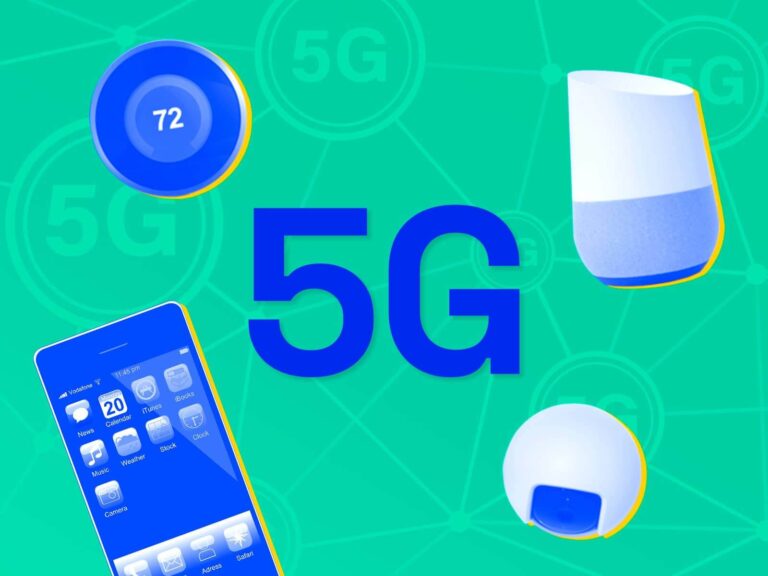
introduction
We knew that 2G was about “voice and SMS” features, 3G was about “mobile data” features, and 4G was about “mobile broadband” features. We mainly associate all these generations of mobile technologies with consumers (mobile users).
5G is the first technology associated with “digital transformation.” This is often referred to as “mobile edge” technology, a technology that is deployed at the “edge” and enables many interesting use cases, including Industry 4.0.
There are three main technologies enabled by 5G: eMBB (Enhanced Mobile Broadband), URLLC (ultra-high reliability, low-latency communication), and mmTC (Large-scale machine type communication). All these technology enablers can be perfectly leveraged for digital transformation in various industries including manufacturing, healthcare, education, defense, utilities, smart cities, and more.
Advantages of private 5G networks
Private 5G networks refer to local cellular networks that are owned and operated by individual organizations, rather than relying on public cellular infrastructure provided by traditional network operators. These networks are designed to serve a specific organization or geographically limited area.
Wi-Fi is the primary wireless technology used in industry and other businesses today. The table below summarizes the key differences between 5G and WiFi 6 technologies.

Private 5G networks offer significantly faster speeds and lower latency compared to traditional networks. This enables faster data transfers, improved real-time communications, and seamless connectivity, allowing businesses to take advantage of performance-hungry applications.
With dedicated infrastructure and localized coverage, private 5G networks offer better reliability and security. Optimized for mission-critical applications, ensuring uninterrupted connectivity even in challenging environments. These networks are isolated from public networks and provide an additional layer of protection against cyber threats and unauthorized access.
Private 5G networks also have the ability to handle a huge number of devices simultaneously. This is especially important for applications such as industrial IoT, smart cities, and self-driving cars, where vast numbers of devices need to be seamlessly connected and coordinated.
How to build a private 5G network
There are five key elements that form part of a digital transformation solution with private 5G.
- UE (User Equipment): Refers to end-user devices or equipment that connect to a 5G network. A UE can be any smartphone, tablet, laptop, 5G-enabled camera, IoT gateway, 5G modem, fixed CPE, plug-in UE (dongle, Mi-Fi device, video bridge), etc. that enables communication over a network. You can use your device. chipset/module. In 5G networks, SIM/eSIM is the component that acts as the identity of the UE.

- Spectrum and SAS (Spectrum Access System): One of the key enabling factors for private 5G deployment is spectrum availability.
CBRS (Citizens Broadband Radio Service) in the United States was created by the Federal Communications Commission (FCC) to enable shared access to spectrum for both commercial and federal users. The CBRS band utilizes a three-layer sharing framework to allocate spectrum resources.
- Tier 1 Active Users: The top tier consists of authorized federal and military users who are given priority access. For example, the Navy regularly uses 10-10 MHz in certain locations along the coast.
- Tier 2 Priority Access License (PAL): The second tier consists of entities that obtain a PAL through an auction process. A PAL holder has preferential access to certain parts of her CBRS spectrum within certain geographic areas.
- Tier 3 General Authorized Access (GAA): Tier 3 consists of unlicensed users who have access to the entire 150MHz CBRS spectrum that is not being used by existing or PAL holders.

The Spectrum Access System (SAS) is responsible for managing and authorizing access to the CBRS spectrum, ensuring efficient and interference-free sharing among various users. SAS determines the availability of spectrum in a specific geographic area and time. SAS allocates specific frequency channels or bandwidth portions to both PAL and GAA devices based on spectrum availability.
- Radio/CBSD:
CBSD (Citizens Broadband Radio Service Devices) are devices used to access spectrum and provide radio coverage and capacity. They can be thought of as equivalent to access points that radiate RF power, have antenna characteristics, and have geolocation information.

Two categories are defined:
- Category A (indoor, low power (maximum EIRP: 30dBm, <1W/10MHz, self-installed, outdoor antenna height limited to 6m)), and
- Category B (outdoor, high power (47 dBm/10MHz), professionally installed).
- core network: Can be thought of as an intelligent router that also performs UE authentication. Network management systems can also be included in core infrastructure deployments.

- edge application: These are the things that are driving the use of private 5G networks. These applications can be AR/VR-based, video analytics, ML inference at the edge, or any other application that can connect to the UE using a high-throughput, low-latency private 5G network.

conclusion
As the deployment of private 5G networks continues to expand, we expect to usher in an era of unprecedented innovation, automation, and connectivity that will reshape industries and pave the way for a more connected future.
The diagram below illustrates the potential of private 5G networks across different businesses, sectors, and industries.



